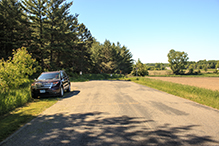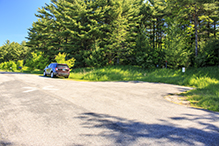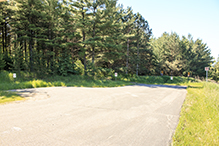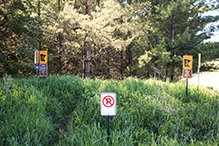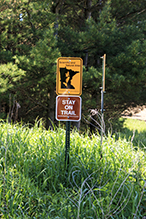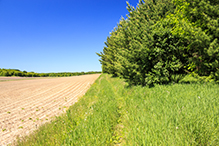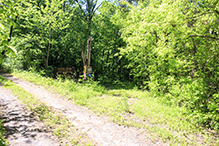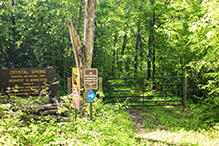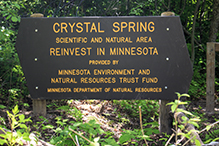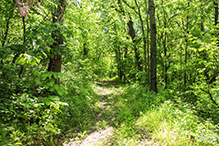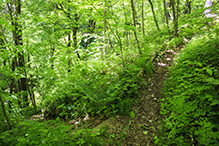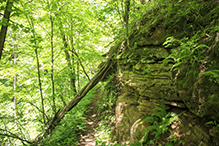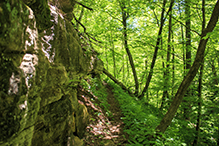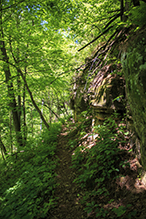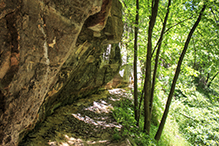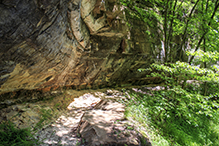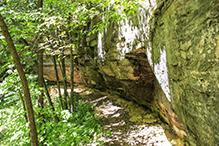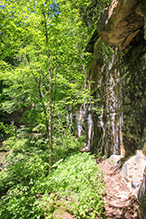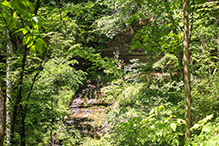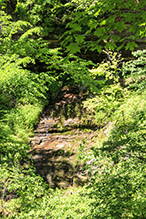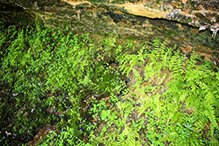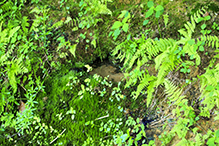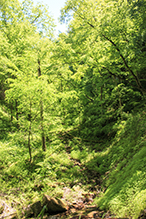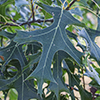Crystal Spring SNA
About • Location • Activities • Ecology
About |
||
Ownership |
||
|
||
Links |
||
Overview |
||
On rare occasions we come across a wild space so fragile or beautiful that we hesitate to publish it. We want to keep it to ourselves, to protect it and prevent it from being spoiled. The hidden cove at Crystal Spring Scientific and Natural Area is that kind of place. Crystal Spring SNA is near Taylor’s Falls in northern Washington County. Its 38 woodland acres are mostly red oak forest with small areas of black ash swamp. A forest road and then a well-worn hiking trail lead from the northwest corner to the southeast corner of the SNA. The hiking trail eventually passes a set of winding steps that leads down a bluff and out of sight. The steps end at a sandstone cliff about 25 feet above a stream. A narrow trail at the base of the cliff but only halfway down the steep bluff leads to a hidden cove. The north wall of the cove is dry cliff exposing two bedrock layers, Jordan Sandstone and Saint Lawrence Shale. A spring at end of the cove bubbles into a “crystal” clear pool which overflows down the cliff to Zavoral’s Creek below. The steep walls of the gorge, the waterfall, and the lush vegetation join to create an alluring natural attraction. Four species with conservation status in Minnesota have been seen here: butternut, an endangered species; and American ginseng, Louisiana Waterthrush, and Red-shouldered Hawk, all special concern species. |
||
History |
||
This site was designated Crystal Spring Scientific and Natural Area on January 19, 2016. It was published on the Minnesota DNR Website in May 2017. |
||
Management |
||
|
||
Comments |
||
|
||
Location |
||||
Maps |
||||
Printable Map(s) with GPS coordinates |
||||
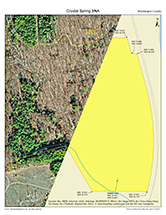 |
||||
Size |
||||
38 acres |
||||
Parking |
||||
Park on the east road shoulder only N45 15.792, W92 46.095 |
||||
Driving Directions |
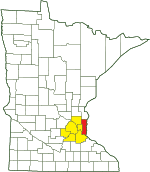 |
|||||
| Washington County | ||||||
| Metro Area | ||||||
Activities |
||
Hiking Trails |
||
There are no maintained trails. A hiking corridor leads from the parking area to the SNA. An old forest road leads from the SNA sign to a clearing in the forest. From there, a hiking trail leads past a hidden cove to the south boundary of the SNA. Visitors are asked to stay back from the cliffs and off the steep slopes. The hiking trail eventually passes a set of winding steps that leads down a bluff and out of sight. The steps end at a sandstone cliff about 25 feet above a stream. A narrow trail at the base of the cliff but only halfway down the steep bluff leads to a hidden cove. |
||
Hunting |
||
No hunting |
||
Ecology |
|||||||
Ecological Classification |
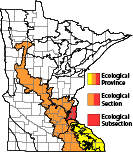 |
||||||
| Ecological Province | Eastern Broadleaf Forest Province |
||||||
| Ecological Section | Minnesota & NE Iowa Morainal |
||||||
| Ecological Subsection | St. Paul-Baldwin Plains and Moraines |
||||||
| Land Type Association | Maplewood Moraine Stillwater Alluvial Plain |
||||||
Native Plant Communities* |
|||||||
Not mapped (10/11/2021) Preliminary listing: Black Ash - (Red Maple) Seepage Swamp Red Oak - Basswood Forest (Noncalcareous Till) Red Oak - White Oak - (Sugar Maple) Forest Wet Sandstone Cliff (Southern) |
|||||||
| * Source: The Minnesota Biological Survey, Minnesota Department of Natural Resources, Division of Ecological Resources | |||||||
Natural Features |
|||||||
Exposures of Jordan Sandstone and Saint Lawrence Shale. |
|||||||
Hidden Cove
The north wall of the cove is dry cliff exposing two bedrock layers, Jordan Sandstone and Saint Lawrence Shale. A spring at end of the cove bubbles into a “crystal” clear pool which overflows down the cliff to Zavoral’s Creek below.
Zavoral’s Creek
Zavoral’s Creek is a short (0.58 mile), high quality (water quality rating “A”), perennial stream that passes through Crystal Spring SNA. It contains several waterfalls and supports a healthy population of brook trout.


Visitor Videos |
|||
Share your video of this destination. |
|||
| This button not working for you? Simply email us at info@MinnesotaSeasons.com. Attach a video, a YouTube link, or a cloud storage link. |
|||
Other Videos |
|||
| Crystal Spring Scientific and Natural Area Virtual Hike Minnesota Department of Natural Resources |
|||
About
Aug 25, 2020 Crystal Spring SNA is a hidden gem, carved by water. For brief periods, snowmelt and rain create a fleeting waterfall that plunges over a sandstone ledge into the gorge. But the real action here is the perpetual spring that bubbles forth from between the layers of sandstone. This site is fragile. Please enjoy gently. Even if you never visit this SNA in person, you can rest assured knowing that this piece of Minnesota’s natural heritage it protected in perpetuity. mndnr.gov/snas/sna02068 |
|||


American chestnut
An American chestnut (Castanea dentata) was found here on 6/1/2017. It has no conservation status in Minnesota because it is not known to occur naturally in the state. The tree on this site was most likely planted.
Created: Last Updated: © MinnesotaSeasons.com. All rights reserved. |

